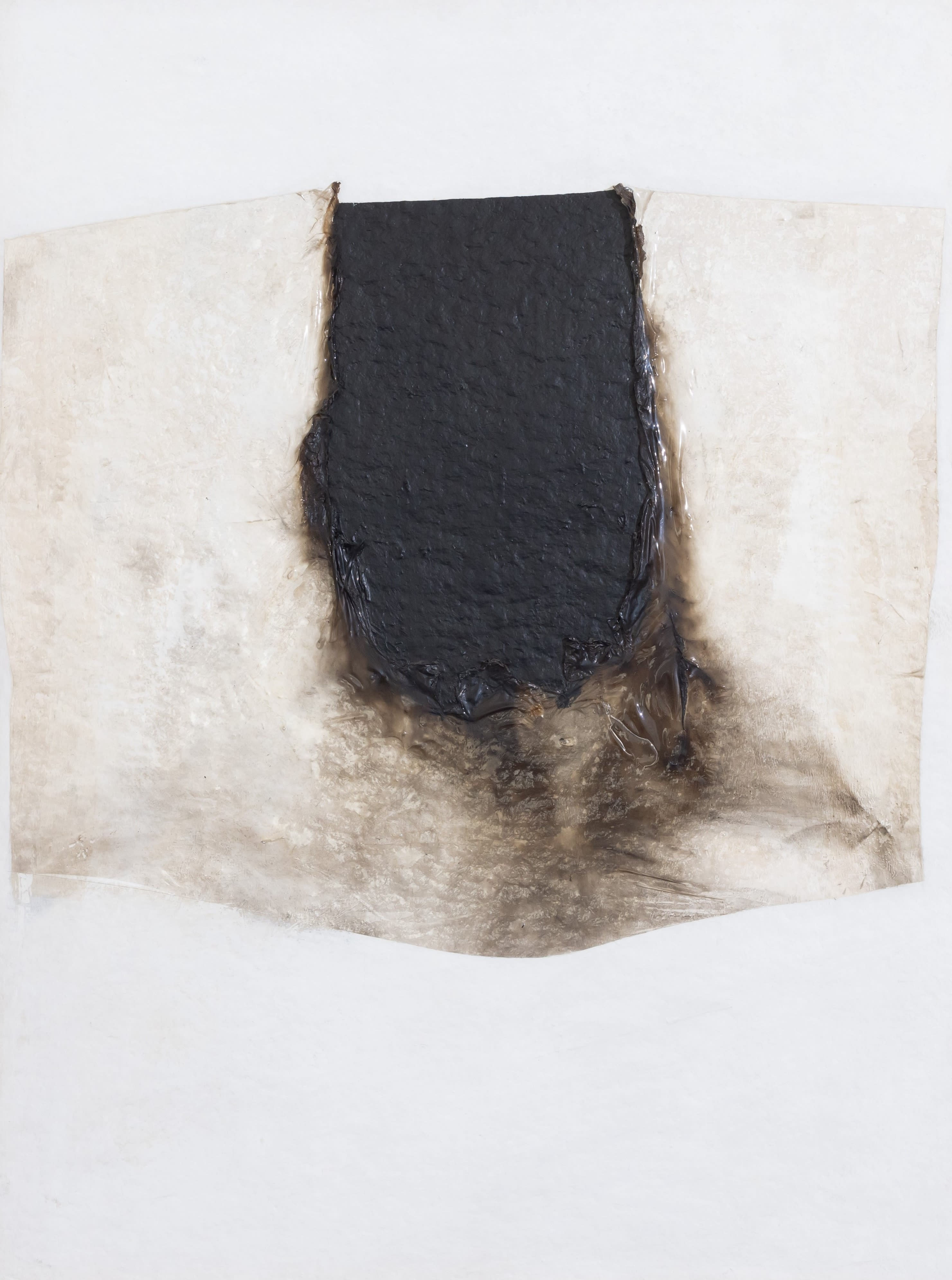Alberto Burri
b. 1915, Città di Castello, Italy
d. 1995, Nice, France
Bianco CN4
1966
Plastic, acrylic, Vinavil and combustion on Celotex
101 x 70 cm (39 3/4 x 27 1/2 in.)
Provenance
Private collection, Europe.
Literature
Galleria Blu, Opere Recenti di Burri, exhibition catalogue, Milan, 1968, no. 20.
M. Calvesi, Alberto Burri, Milan, 1971, reproduced on cover.
R. Olivieri and C. Sarteanesi, Burri. Contributo al Catalogo Sistematico, Città di Catsello, 1990, pp. 202-203, no. 859.
L. Fontana, A. Burri, Afro & N. Orengo, Fontana - Burri - Afro. Gesto Materia colore, Aspetti della Cutlura Italiana del Secondo Novecento, exhibition catalogue, Turin, 2006, pp. 54-55.
A. Lori, 'Alberto Burri: la Vita, il Percorso Artistico e Critico' in B. Corà (ed.), Alberto Burri Opera al Nero Cellotex 1972-1992, exhibition catalogue, Milan, 2012, p. 192.V. Brandi-Rubiu, Alberto Burri, exhibition catalogue, London, 2015, pp. 62-63.
B. Corà, Catalogo Generale. Pittura 1958-1978, Città di Castello, 2015, vol. II, p. 189, tav. 1092, vol. VI, p. 167, no. 6624.
G. Luigi Marcone, Mazzoleni 1986-2016: 30 anni d’arte 30 artisti italiani, exhibition catalogue, Turin, 2016, p. 131.
Description
Born in Città di Castello in Umbria, Alberto Burri trained in medicine and served as a doctor in North Africa during World War II. In 1943 he was taken prisoner and held in a prisoner-of-war camp in Hereford, Texas which was where he first began to paint. In 1946 he returned to Italy and the following year held his first solo exhibition; his works from this period were strongly influenced by Expressionism.
At the outset of his career, Burri’s artistic technique evolved rapidly and he began to explore abstraction in vibrant yet delicate works inspired by artists such as Paul Klee. Between 1948 and 1950, however, he was to develop a radical approach to image-making grounded in a poetic exploration of matter that challenged the two-dimensional nature of the wall-mounted artwork. During the 1950s Alberto Burri’s celebration of humble materials such as sacking and tar created a new aesthetic, rich in expressive power, that was later to prove decisive for artists associated with the Arte Povera movement. Critics and art historians have interpreted the artist’s use of unconventional materials as a response to the trauma of the Second World War, a metaphor for the physical and existential wounds of Europe arising from the conflict.
Burri continued to expand and refine his interest in wide-ranging materials over the course of a long career, working with substances such as rubber, pumice stone, plastic and wood, which he variously layered, cut, and charred in the creation of his works. In doing so, he was to become a leading protagonist of Art Informel, focussing on the process as an integral part of an artwork’s significance.
Burri's Cellotex works were one of his later series that incorporated everyday or unconventional materials, in this case the brand of fibreboard called Celotex. To distinguish his artworks from the brand, he referred to this series, and individual pieces, as Cellotex. In these works, Burri implements many of his trademark processes, such as combustion, layering and scoring the surface, creating highly textured, visceral compositions that once again gave prominence to otherwise banal materials. A similar Cellotex work, Bianco B (1965) is in the Guggenheim collection.




